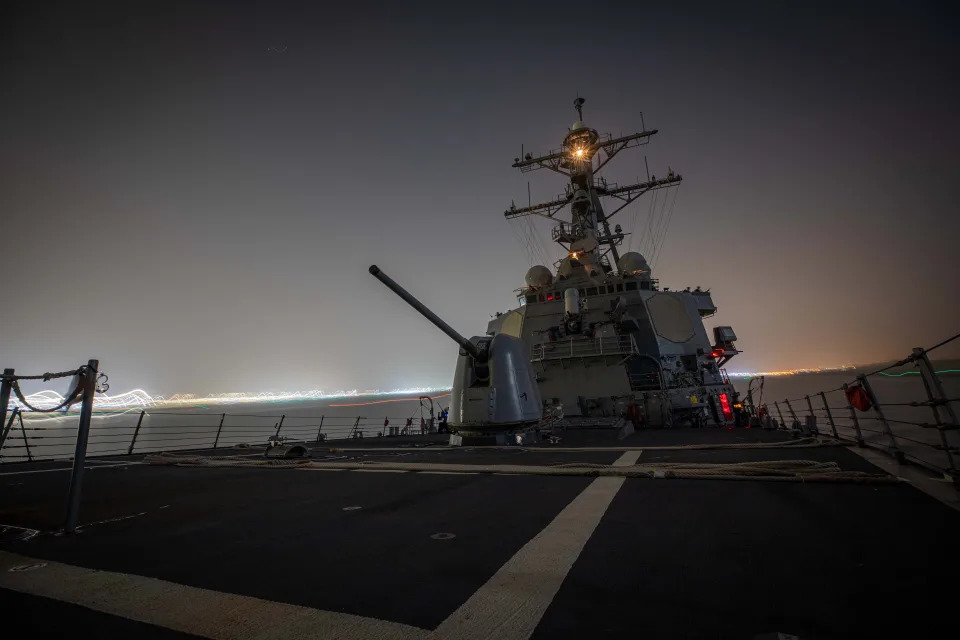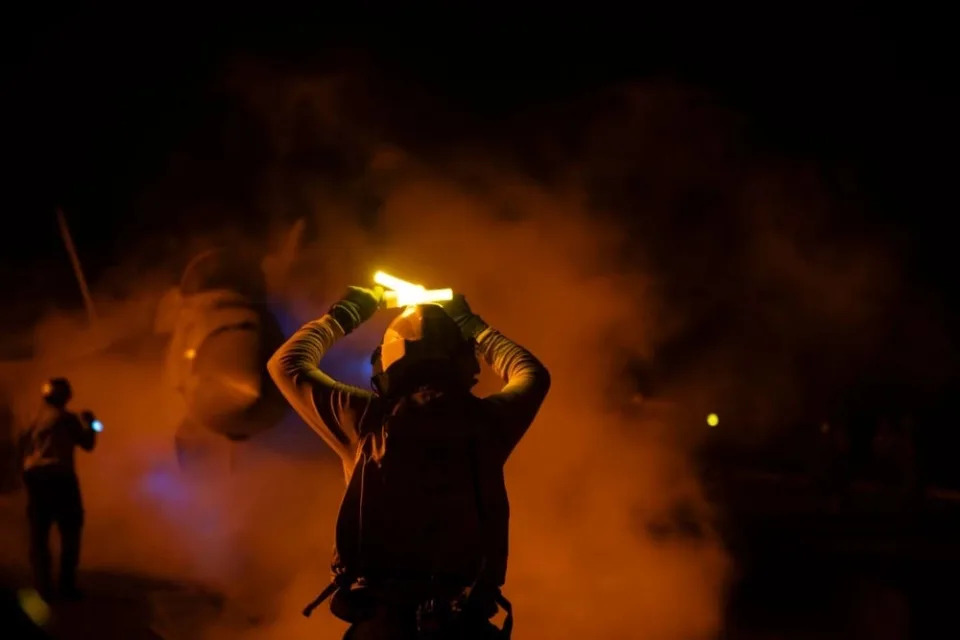Jake Epstein
Tue, April 16, 2024
US naval forces in the Middle East have been involved in shooting down malign threats for months.
The cost of munition expenditure during this time is approaching $1 billion, the Navy secretary said.
He said it's urgent that Congress passes additional funding to help replenish munition stocks.
The US Navy has fired nearly $1 billion in missiles to counter threats from Iran and its proxy forces over the past six months, the sea service's top civilian official revealed on Tuesday.
The disclosure underscores the depth — and the growing financial cost — of US naval involvement in the Middle East.
Since October, American warships and aircraft operating in the Red Sea have shot down scores of Houthi missiles and drones, and carried out preemptive strikes against the militants directly in Yemen.
More recently, over the weekend, American warships operating in the eastern Mediterranean Sea intercepted multiple Iranian ballistic missiles during Tehran's unprecedented attack on Israel.
"We have actually countered over 130 direct attacks on US Navy ships and merchant ships," Secretary of the Navy Carlos Del Toro said at a Senate Appropriations Subcommittee on Defense budget hearing for the upcoming fiscal year.

The Arleigh Burke-class guided-missile destroyer USS Carney transits the Suez Canal on Nov. 26.US Navy photo by Mass Communication Specialist 2nd Class Aaron Lau
Del Toro told lawmakers that "the munitions that are critical to these counterstrikes are extremely important" to the Navy and said the service is nearing $1 billion worth of munitions that need to be replenished. It was not immediately clear if the presented figure included the weekend interceptions.
The various munitions that the Navy has used to intercept threats in the air and also conduct preemptive strikes on the Iran-backed Houthis in Yemen are not cheap, and because these engagements have occurred regularly over the past six months, the costs add up. A Standard Missile-2 interceptor, for instance, is estimated to cost around $2 million.
The massive national security supplemental package which has been at the center of months of concerns over the future of US military aid to Ukraine includes $2.4 billion in funding to address the Navy's fight in the Red Sea, including the depletion of munitions.
The big supplemental package has already been passed by the Senate but it continues to be blocked by House Republicans, despite significant pressure from the Biden administration — and even from US partners overseas, including Ukraine — to push it through.

USS Dwight D. Eisenhower conducts flight operations in response to the Houthis in the Red Sea.US Navy photo by Mass Communication Specialist 3rd Class Kaitlin Watt
Del Toro said "it's critical for Congress to pass the supplemental this week so that we can actually get the additional resources to be able to supplement those munitions that will be critical moving forward."
Navy warships and fighter jets have been tasked for months with defending key international shipping routes off the coast of Yemen, in the Red Sea and Gulf of Aden, from relentless Houthi attacks. Beyond intercepting missiles and drones in the air, American forces have often hammered the militant forces in Yemen before they're able to get their weapons in the air.
The Pentagon's Red Sea operations, however, have raised questions about sustainability, as the Houthis show no sign of letting up their attacks. Even over the weekend, amid Iran's attack on Israel, US forces continued to engage the militants.
Iran's attack, meanwhile, raises new concerns about sustainability, as US forces — including the Navy — were tasked with defeating dozens of threats in the air. The massive aerial barrage has prompted Israel to promise its own retaliation, sparking fears that the Middle East could spiral into even more violence.
Business Insider


No comments:
Post a Comment